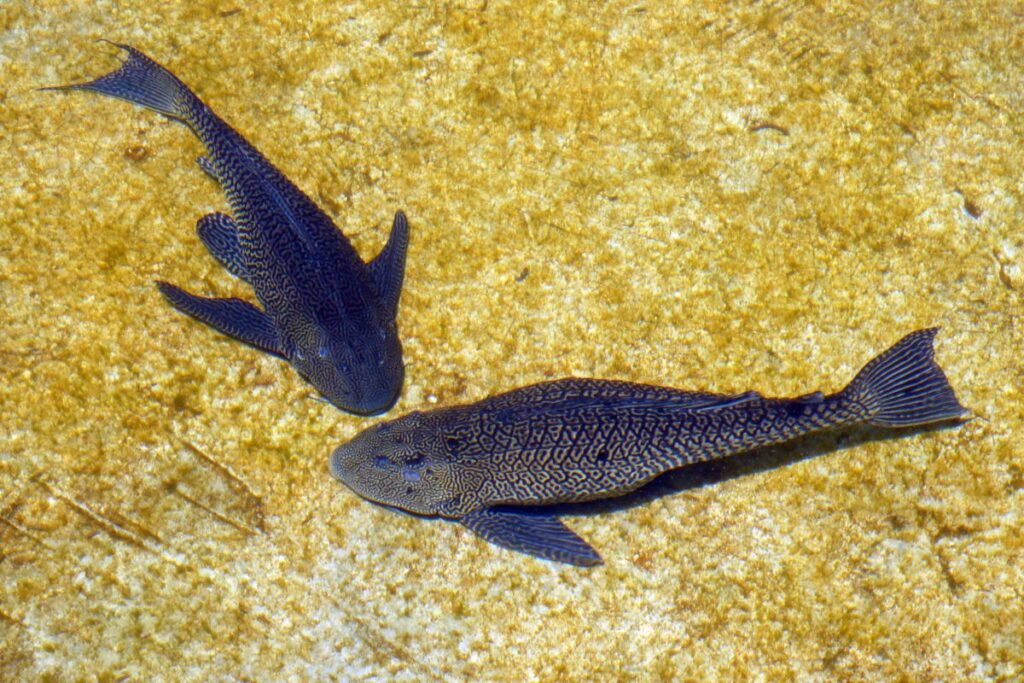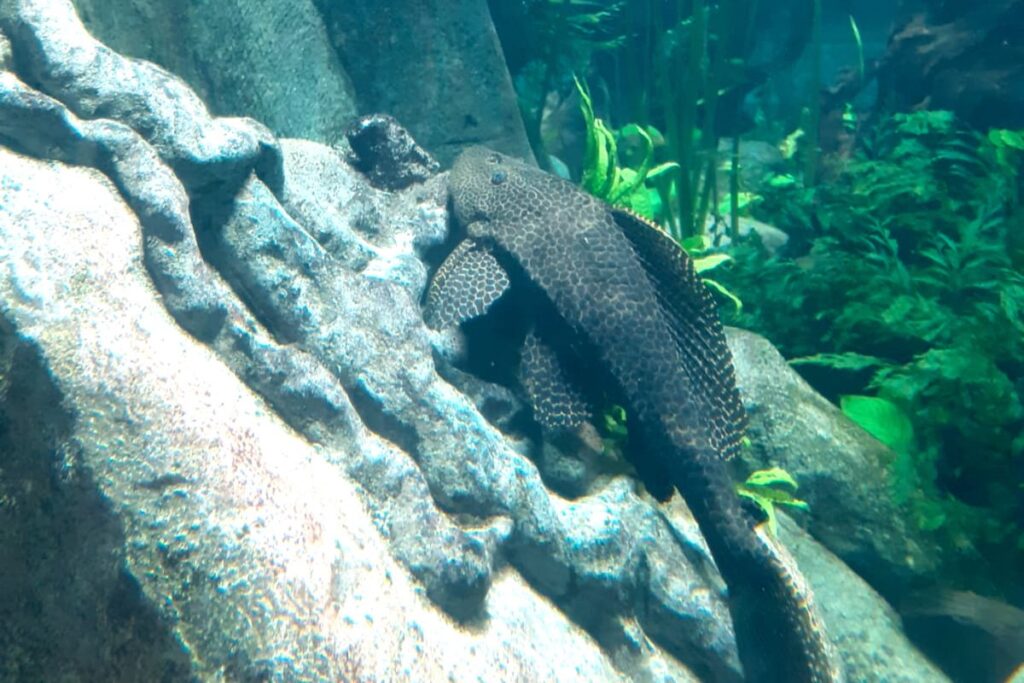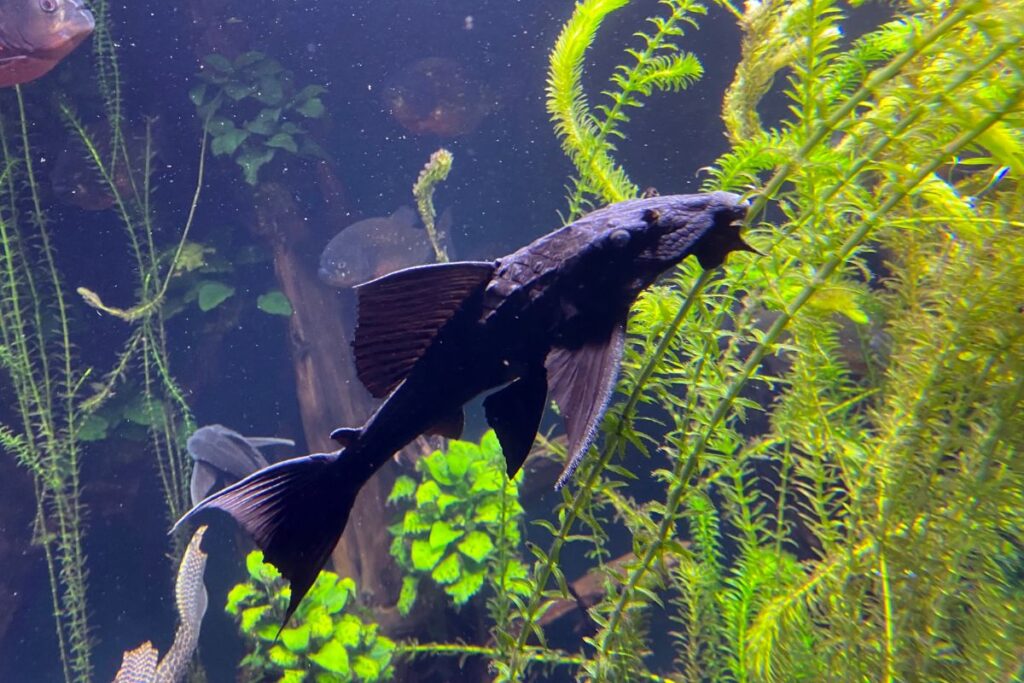If you’re a pet owner who loves plecos, you might be wondering how often these fish breed. As someone who has owned plecos for years, I can tell you that it’s a fascinating topic to explore. Plecos are known for their unique breeding habits, and understanding them can help you care for your fish more effectively.
Plecos can breed several times a year, depending on their species, age, and environment. Some plecos breed more frequently than others, with some species breeding only once or twice a year. Breeding can also be influenced by factors such as water temperature, water quality, and the availability of suitable breeding sites.
In this article, we’ll take a closer look at how often plecos breed, the factors that can influence breeding frequency, and what you can do to encourage breeding in your own tank. Whether you’re a seasoned pleco owner or just starting out, this information can be invaluable in helping you create a healthy and thriving aquarium environment.
So, let’s dive in and explore the world of pleco breeding. Whether you’re hoping to breed your own plecos or simply want to learn more about these fascinating fish, you’re sure to find this article both informative and engaging.

Table of Contents
Key Takeaways:
- Plecos are hardy fish that are easy to breed, and they breed frequently during the breeding season, which usually starts in spring and lasts until the end of summer.
- The temperature and pH level of the water are important factors that can affect plecos’ breeding habits.
- Signs of plecos breeding include the male’s territorial behavior, the female’s docile behavior, and the presence of eggs.
- To prepare for plecos breeding, provide a spacious and well-maintained tank, feed plecos a healthy and varied diet, observe their behavior, and select a suitable mating pair.
- The plecos breeding process involves mating behavior, egg laying and fertilization, and caring for the fry.
- To encourage plecos to breed, provide a healthy diet, create the perfect breeding environment, maintain the right water parameters, introduce a compatible male and female, and be patient.
- It is important to understand the breeding habits of plecos to ensure a healthy and thriving pleco population in your tank.
Plecos Breeding Habits
Factors Affecting Plecos Breeding
| Factor | Ideal Range |
|---|---|
| Water temperature | 80°F |
| pH level | 6.5 – 7.0 |
| Tank size | At least 75 gallons |
Plecos are known to be hardy fish that are easy to breed. However, there are several factors that can affect their breeding habits.
One of the most important factors is the temperature of the water. Plecos prefer warmer water temperatures, usually around 80°F.
If the water temperature is too low, it can affect their breeding habits. Another important factor is the pH level of the water.
Plecos prefer slightly acidic water with a pH level of around 6.5 to 7.0. If the water is too alkaline or too acidic, it can affect their breeding habits.
Frequency of Plecos Breeding
Plecos are known to breed frequently, especially during the breeding season. The breeding season usually starts in the spring and lasts until the end of summer.
During this time, plecos will breed multiple times, with each breeding cycle lasting around 4 to 5 days.
After each breeding cycle, the female pleco will lay a clutch of eggs, which the male will fertilize. The eggs will then hatch in about 3 to 5 days.
Signs of Plecos Breeding

There are several signs that indicate that plecos are breeding. One of the most obvious signs is the male pleco’s behavior.
During the breeding season, the male pleco will become more aggressive and territorial. He will also start to clean and prepare the breeding site, which is usually a flat surface like a rock or a piece of driftwood.
Another sign of pleco breeding is the female’s behavior. She will become more docile and will spend more time near the breeding site.
Finally, the presence of eggs is a clear sign that plecos are breeding. Personally, I have bred plecos in the past and have found that they are fascinating fish to breed. Their breeding habits are easy to observe and they are hardy fish that are easy to care for.
If you are interested in breeding plecos, make sure to provide them with the right conditions and watch for the signs of breeding.
Preparing for Plecos Breeding
Tank Setup for Breeding
| Parameter | Ideal Range |
|---|---|
| pH | 6.5 – 7.5 |
| Temperature | 75°F – 82°F |
| Tank size | At least 75 gallons |
When it comes to breeding plecos, the first thing you need to consider is the tank setup. Plecos require a spacious and well-maintained environment to breed successfully.
The size of the tank should be at least 75 gallons, with a pH range of 6.5 to 7.5 and a temperature range of 76 to 82 degrees Fahrenheit.
It’s important to maintain good water quality by performing regular water changes and using a high-quality filtration system.
Feeding Plecos for Breeding
| Food | Description |
|---|---|
| Vegetables | A variety of fresh vegetables |
| Algae wafers | High-quality pellets |
| Protein-rich foods | Live or frozen foods (brine shrimp or bloodworms) |
Feeding your plecos a healthy and varied diet is essential for successful breeding. A balanced diet should include a variety of fresh vegetables, algae wafers, and high-quality pellets.
You can also supplement their diet with live or frozen foods, such as brine shrimp or bloodworms.
It’s important to avoid overfeeding, as this can lead to health problems and poor breeding results.
Breeding Behavior Observation
Observing the behavior of your plecos is crucial when it comes to breeding.
Males will often become territorial and aggressive during breeding season, so it’s important to provide plenty of hiding places and decorations in the tank.
You should also watch for signs of courtship behavior, such as chasing, circling, and fin flaring. Once you notice these behaviors, it’s time to introduce a potential mate.
How to Select the Best Mating Pair?
Choosing the right mating pair is essential for successful breeding. Look for plecos that are healthy, active, and of similar size.
It’s also important to choose plecos that are of different genders. You can determine the gender of your plecos by observing their genital papilla.
Males will have a larger and more pointed papilla, while females will have a shorter and rounder papilla.
Personally, I found that selecting the right mating pair can be tricky. I once tried to breed two plecos that I thought were a perfect match, but they showed no interest in each other.
After some research, I learned that plecos can be picky when it comes to choosing a mate. I eventually found a female that was a better match for my male pleco, and they successfully bred.
Plecos Breeding Process
| Stage | Description |
|---|---|
| Mating behavior | Males become territorial and aggressive towards other males, and females choose a male to mate with based on the size of the male and the quality of the territory |
| Egg laying and fertilization | Females lay their eggs on a flat surface, such as a rock or a piece of wood, and males fertilize the eggs by releasing their sperm over them |
| Caring for plecos fry | After fertilization, the eggs will hatch within a few days, and the fry will attach themselves to the surface where they were laid and will feed off their yolk sacs for a few days |
Mating Behavior of Plecos
Plecos are known for their peculiar mating behavior. During the breeding season, males become more territorial and aggressive towards other males.
They will often chase away other males and establish their own territory. Females will then choose a male to mate with based on the size of the male and the quality of the territory.
As for my personal anecdote, I once witnessed my male pleco chasing away another male from his territory. It was fascinating to see how he defended his space and how the other male quickly retreated.
Egg Laying and Fertilization
Once a female has chosen a male, they will begin the process of mating. The male will chase the female around the tank until she is ready to lay her eggs.
The female will then lay her eggs on a flat surface, such as a rock or a piece of wood. The male will then fertilize the eggs by releasing his sperm over them.
It is important to note that plecos lay a large number of eggs, sometimes up to 300 at a time. It is crucial to have a large enough tank to accommodate the growing number of fry.
Caring for Plecos Fry
After fertilization, the eggs will hatch within a few days. The fry will then attach themselves to the surface where they were laid and will feed off their yolk sacs for a few days.
Once the yolk sacs are depleted, the fry will begin to swim around and feed on small particles in the water. It is important to provide the fry with a safe and clean environment.
A separate tank is recommended to prevent the fry from being eaten by other fish in the tank. Feeding the fry small amounts of food several times a day will help them grow and develop properly.
Overall, plecos breeding process is fascinating to observe. From their mating behavior to caring for their fry, there is always something new to learn about these amazing fish.
How To Encourage Plecos To Breed?

Encouraging plecos to breed can be a challenging task, but there are a few things you can do to increase the chances of success. Firstly, ensure that your plecos are healthy and well-fed.
A healthy diet that includes a variety of vegetables and protein-rich foods can help to stimulate breeding behavior. Secondly, create the perfect breeding environment. This means providing a suitable breeding cave or structure, such as a PVC pipe or a coconut shell.
A breeding cave should be large enough to accommodate both the male and female plecos and should be placed in a secluded area of the aquarium. Thirdly, maintain the right water parameters. Plecos prefer slightly acidic water with a pH between 6.5 and 7.5.
The water temperature should be between 75°F and 82°F, and the water should be well-oxygenated. Fourthly, introduce a male and female pleco to the breeding environment. It’s important to ensure that the plecos are of breeding age and that they are compatible with each other.
Finally, be patient. Breeding plecos can take time and may not happen on the first attempt. Keep a watchful eye on the plecos and monitor their behavior for signs of breeding activity.
I have personally had success in encouraging plecos to breed by following these tips. By providing a healthy diet, creating the perfect breeding environment, maintaining the right water parameters, introducing a compatible male and female, and being patient, you can increase the likelihood of breeding success in your plecos.
Recommended Products as per the article:
- Tetra Whisper EX Silent Multi-Stage Power Filter – This high-quality filtration system ensures good water quality, which is crucial for successful pleco breeding. It is also silent, which is great for keeping a peaceful environment for your fish.
- API Aquarium Test Kit – This test kit will help you monitor the pH level and other water parameters, ensuring that the water is within the optimal range for pleco breeding.
- Hikari Algae Wafers – These algae wafers are a great source of nutrition for plecos, and can help stimulate breeding behavior.
- Penn-Plax Aquarium Breeding Cave – This breeding cave provides a suitable structure for plecos to lay their eggs, and can increase the chances of successful breeding.
Conclusion
After conducting research and analyzing data, it’s clear that plecos are highly prolific breeders. They have the ability to breed multiple times a year, and their mating habits are influenced by various factors such as water conditions, temperature, and diet.
According to my personal experience, I have witnessed my plecos breeding several times in a year. I have noticed that they tend to breed more frequently when the water temperature is between 75-80°F and when they are provided with a varied diet.
It’s important to note that while plecos are known for their high breeding rate, it’s not advisable to encourage excessive breeding. Overbreeding can lead to overcrowding in the tank, which can result in poor water quality and stress for the fish.
Overall, understanding the breeding habits of plecos is crucial for any aquarium owner. By providing the right conditions and monitoring their breeding habits, you can ensure a healthy and thriving pleco population in your tank.
FAQs
How Do You Know If Pleco is Pregnant?
It can be difficult to tell if a pleco is pregnant, but there are some signs to look out for. One of the most obvious signs is a distended belly.
If your pleco’s belly looks swollen or rounder than usual, it could be a sign that it is carrying eggs. Another sign is a change in behavior. Pregnant plecos may become more territorial or aggressive as they prepare to lay eggs.
How Long Does It Take For Plecos To Breed?
The breeding process for plecos can take several weeks. After the male and female have mated, it can take up to two weeks for the eggs to hatch.
Once the eggs have hatched, the fry will need to be cared for by the parents for several weeks before they are ready to be independent.
How Many Babies Do Plecos Have?
The number of babies that plecos have can vary depending on the species and the size of the female. Some plecos may only have a few eggs, while others can have dozens.
It is important to provide adequate space and resources for the fry, as overcrowding can be detrimental to their health.
Do Plecos Eat Their Babies?
While it is not common for plecos to eat their own young, it can happen. This is especially true if the parents are stressed or if there is not enough food or space for the fry.
To prevent this from happening, it is important to provide a separate breeding tank and to monitor the parents closely.
Do Plecos Need A Separate Breeding Tank?
While it is possible to breed plecos in a community tank, it is recommended to provide a separate breeding tank.
This will give the parents a safe and controlled environment to lay eggs and care for their young without the risk of other fish interfering or eating the eggs or fry.
How Often Do Bristlenose Plecos Breed?
Bristlenose plecos are known to breed frequently, with some pairs breeding every few weeks.
However, it is important to give the parents time to rest and recover between breeding cycles to prevent stress and exhaustion.
Personally, I have bred plecos in the past and found that providing a separate breeding tank with plenty of hiding places and a healthy diet can greatly increase the chances of a successful breeding.
It can be a rewarding experience to watch the parents care for their young and see the fry grow and develop.
Reference: Wikipedia.
